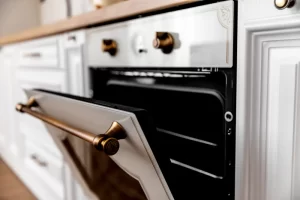Scratches, dings, and chipped corners happen—especially on well-loved wood furniture. Whether it’s the coffee table that sees everything or the dining chairs that take a daily beating, a little wear and tear is inevitable.
But before you haul that piece out to the curb or consider refinishing the whole thing, grab a paint pen. With the right type, color match, and technique, you can restore your furniture’s appearance in minutes—without a full-blown DIY project.
Here’s how to use paint markers the smart way to make wood imperfections disappear.
🖌️ Choosing the Right Type and Finish (Gel, Oil-Based, Matte)
Not all paint pens are created equal. The type of marker you choose can make a big difference in how the touch-up looks—and how well it lasts.
Common types of paint markers for wood:
- Oil-based paint pens: Durable and glossy; great for darker finishes or high-use items
- Gel-based wood pens: Blend easily and work well for fine scratches on light wood
- Matte finish markers: Ideal for unfinished or rustic-style pieces
- Furniture repair kits: Often include multiple markers + blending crayons or polish
Tip: Match the finish of your wood—not just the color. A glossy pen on a matte table will stand out just as much as a color mismatch.
🎯 Test First! Why Blending Is Key
Even if the marker looks like the right color, wood tones can be tricky. Lighting, grain variation, and old finishes all play a role in how the touch-up will blend.
Before applying it directly to the visible area:
- Test the marker on the underside or back corner of the furniture
- Allow it to dry fully, as the color can shift slightly
- Layer gently if needed—you can always add more, but removing excess is harder
- If your marker came with a blending pen or crayon, test that combo too
Taking two extra minutes to test can mean the difference between invisible repair and obvious patch.
🚫 Don’t Overdo It: Less Is More with Touch-Ups
It’s tempting to cover the entire scratched area, but a little goes a long way. Too much product can darken the wood unnaturally or draw more attention to the repair.
Touch-up tips:
- Start with a light hand and apply in the direction of the grain
- Use a cotton swab or paper towel to immediately dab and blend
- Avoid layering thickly or going over the same spot too many times
- For deeper scratches, combine a wax crayon base with a paint pen on top
Subtle touch-ups are the most successful—think of it as camouflaging, not painting.
🔒 Sealing the Touch-Up for Longevity
To keep your fix from rubbing off or fading, a light seal can help. Just make sure the area is dry before applying any protective layer.
Options for sealing include:
- A clear furniture polish or wax buffed over the surface
- A light spray of clear matte or satin polyurethane
- Rubbing the area with a soft cloth to help set the product into the grain
This step is especially useful on high-touch areas like tabletops, chairs, or cabinet fronts.
🌈 Best Wood Colors to Keep in Your “Touch-Up Kit”
If you don’t already own a touch-up kit, having a few go-to shades can cover most of your furniture emergencies. Furniture repair marker sets often come with these key tones:
- Light oak – for blonde and natural finishes
- Golden pecan or maple – for mid-toned yellow-brown woods
- Walnut – for medium brown finishes
- Mahogany – for reddish woods
- Espresso or dark brown – for deep finishes and black-brown blends
- Black – for painted or very dark finishes
A small multi-tone set usually costs under $10 and is well worth keeping in your drawer or tool kit.
✅ Wrap-Up
Touching up wood furniture doesn’t have to be complicated—or obvious. With the right marker, a steady hand, and a little blending, you can erase years of wear in seconds. Keep a few markers on hand, take your time matching the finish, and don’t forget to seal the fix for long-lasting results.



